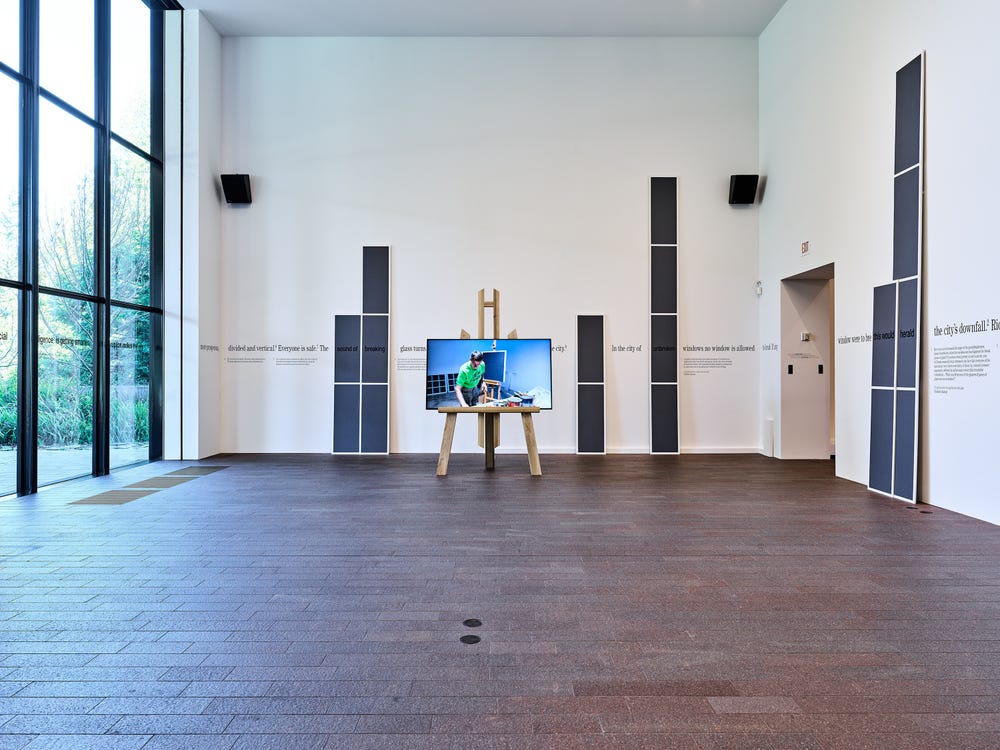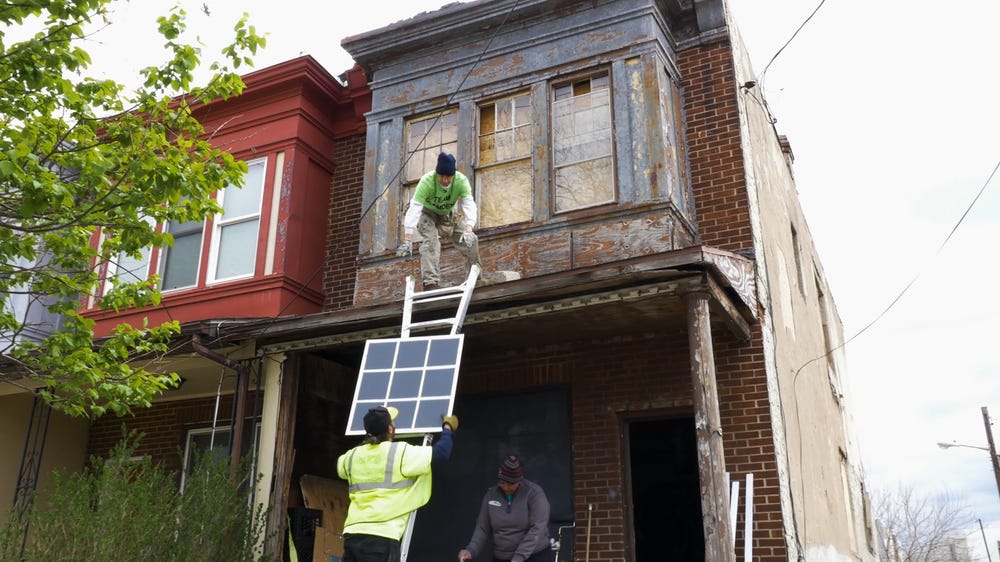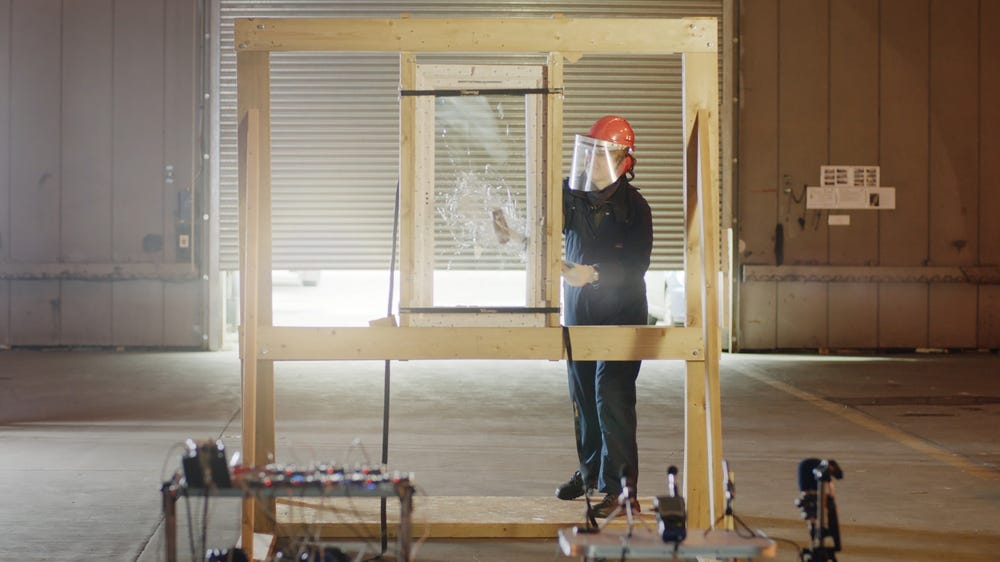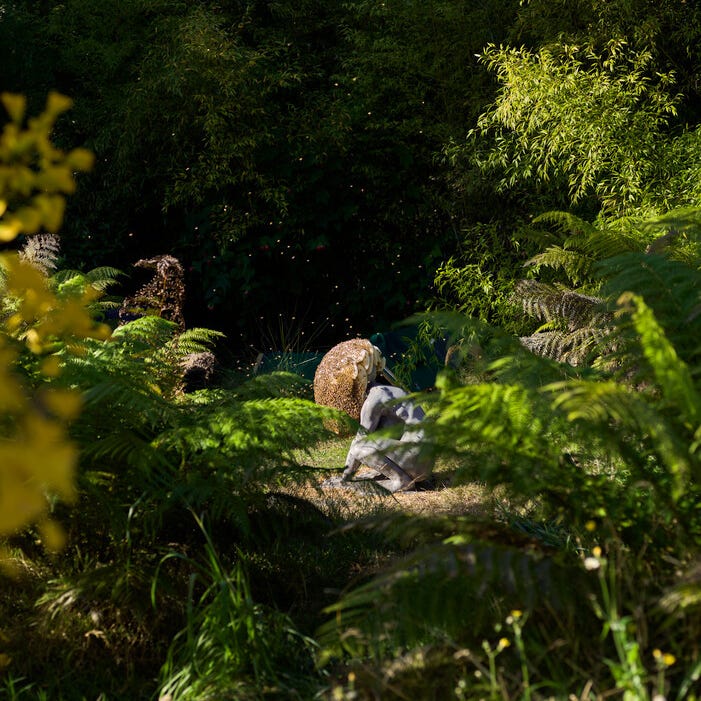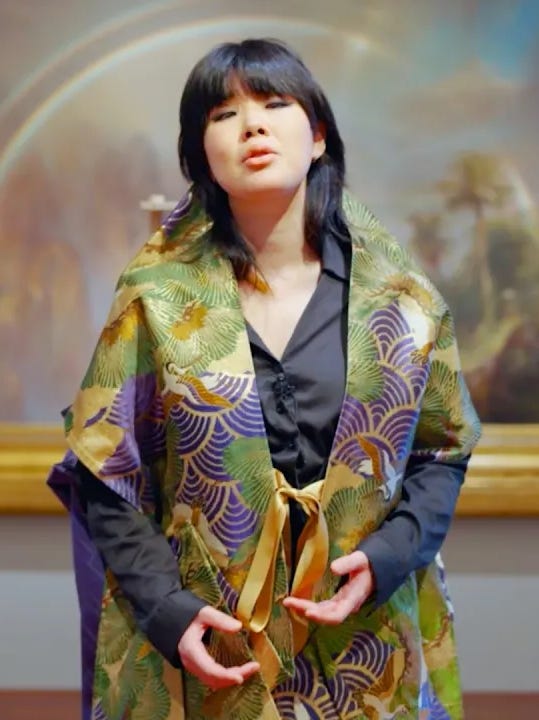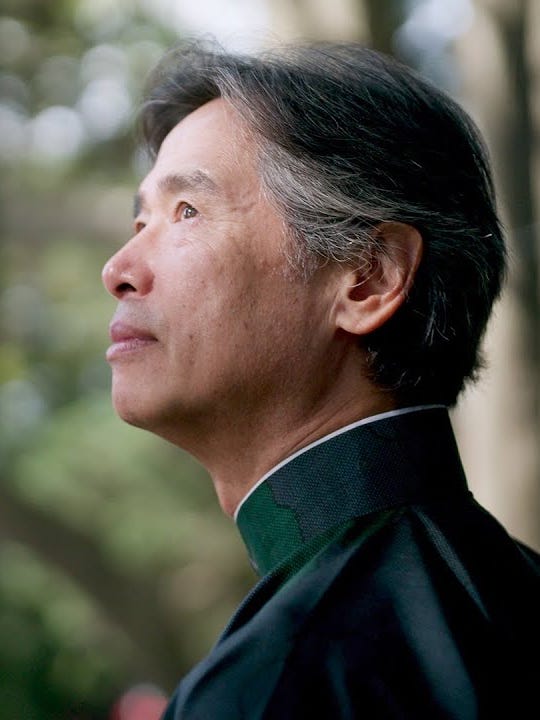With nearby Silicon Valley driving the development of artificial intelligence, or AI, Uncanny Valley: Being Human in the Age of AI is the first major museum exhibition to reflect on the political and philosophical stakes of AI through the lens of artistic practice. This series highlights select artworks included in the exhibition.
For her installation The City of Broken Windows, Hito Steyerl draws on the classic trope of painting opening a window onto another world. In doing so, she stages a collision between the technological disruption of societies and artistic acts of resilience and resistance. At the installation’s core are two videos: Unbroken Windows and Broken Windows. The former documents the activities of the “artivist” Chris Toepfer, whose New Jersey–based organization, the Neighborhood Foundation, works to combat architectural degradation in underserved communities across the United States. It does this by replacing broken or boarded-up windows and doorways with joyful paintings, with the goal of fending off further vandalism and destruction. Steyerl’s video—accompanied by a soundtrack of police sirens and radio chatter—follows Toepfer and his team through Camden, New Jersey, pursuing their mission of restoring dignity to abandoned houses. The second video, Broken Windows, is set in a former airplane hangar, built during World War II, in Cambridge, England. There, a team of researchers and engineers employed by Audio Analytic, a company that develops sound-recognition technologies, take turns breaking windowpanes. Their recordings are used to train AI software to recognize the sound of breaking glass, a technology widely used in home safety devices and alarm systems.
Hito Steyerl, The City of Broken Windows, 2018. Video installation, environment. Broken Windows, 2018: single channel HD video, color, sound, 6 min. 40 sec. Unbroken Windows, 2018: single channel HD video, color, sound, 10 min. Environment: broken glass window, painted plywood panels, vinyl lettering, wood easels. Image CC 4.0 Hito Steyerl Image courtesy of the Artist, Andrew Kreps Gallery, New York and Esther Schipper, Berlin
The videos play off two theories that employ the metaphor of the broken window. In his 1850 essay “Ce qu’on voit et ce qu’on ne voit pas” (That Which Is Seen and That Which Is Not Seen), philosopher and economist Frédéric Bastiat introduced the parable of the broken window in order to disprove what is known as the “broken window fallacy.” Bastiat used the parable to illustrate how economic activity related to destruction and recovery, while creating the illusion of growth, does not actually contribute to the long-term prosperity of society. In 1982, criminologist George L. Kelling and social scientist James Q. Wilson proposed another theory of “broken windows.” Kelling and Wilson identified the broken window as a symptom of civic disorder that suggests an uncared-for environment, which incites fear and invites crime, eventually leading to a cyclical escalation of both. The absorption of this theory into law enforcement has led to the highly controversial deployment of predictive-policing AI systems across the United States and beyond. Such systems rely on crimes documented in police records to develop profiles of people and neighborhoods deemed likely to be high-risk. However, critics of these programs argue that the underlying data reflect and perpetuate entrenched personal and institutional biases by associating behavioral disruption with economically challenged areas more often than not predominantly populated by people of color. In a 2017 interview with The New Inquiry, the artist said, “I’m really fascinated by quantifying social interaction and this idea of abstracting every kind of social interaction by citizens or human beings into just a single number.”
Hito Steyerl, still from Unbroken Windows, 2018: single channel HD video, color, sound, 10 min. The City of Broken Windows, 2018. Video installation, environment. Environment: broken glass window, painted plywood panels, vinyl lettering, wood easels Image CC 4.0 Hito Steyerl. Image courtesy of the Artist, Andrew Kreps Gallery, New York and Esther Schipper, Berlin
The City of Broken Windows portrays a society in which technology functions as a tool of capitalism, serving the privileged and ignoring the historically underprivileged, thus exacerbating social imbalance instead of offering a counterforce. It is a society that abides by an ethos of disruption, as encapsulated by Silicon Valley’s foundational doctrine of “Move fast and break things”—thus affirming the power and control of a select few while aiding in the suppression of all others. Consistent with this power structure is the installation’s unstated reference to November 9–10, 1938, known in Germany as Kristallnacht (the Night of Broken Glass). On this night, Nazi leaders conducted a series of pogroms against the Jews. More than 250 synagogues were burned, and seven thousand Jewish businesses were vandalized. The night was named for the broken glass that littered the streets afterward. It is a reference that resonates during a time when nationalism is increasing worldwide.
Hito Steyerl, The City of Broken Windows, 2018. Installation view from Uncanny Valley: Being Human in the Age of AI. Courtesy of the Artist, Andrew Kreps Gallery, New York and Esther Schipper, Berlin
The text applied to the installation’s surrounding walls spatializes the work’s underlying framework, which reckons with the complex role technology plays in determining humanity’s future. Accompanying Broken Windows are techno-utopian quotes countered by the meaningless jabber of an AI. On another wall, the maxims of law and order that govern the city of unbroken windows are juxtaposed with quotes by Bastiat. Completing the installation are window paintings by Toepfer that “board up” the walls around the two videos, and an AI-composed soundscape that reverberates around the room with its imperfect, chime-like imitation of breaking glass. The videos are presented on easels, the classic tools of painters. It is an important detail that not only aligns them with the restorative power of Toepfer’s canvases, but also posits the critical role of art as an urgent corrective to the rapid and heedless spread of new technologies.
Text by Claudia Schmuckli, Curator in Charge of Contemporary Art and Programming, Fine Arts Museums of San Francisco; from Beyond the Uncanny Valley: Being Human in the Age of AI, Fine Arts Museums of San Francisco. Available for purchase through the Museums Stores.
Learn more about Uncanny Valley at the de Young museum.
Further Reading
- George L. Kelling and James Q. Wilson, “Broken Windows,” Atlantic Monthly, March 1982, www.theatlantic.com/magazine/archive/1982/03/broken-windows/304465.
- Hito Steyerl and Kate Crawford, “Data Streams,” The New Inquiry, January 23, 2017, https://thenewinquiry.com/data-streams.
- Nick Statt, “Zuckerberg: ‘Move Fast and Break Things’ Isn’t How Facebook Operates Anymore,” CNET, April 30, 2014, www.cnet.com/news/zuckerberg-move-fast-and-break-things-isnt-how-we-operate-anymore.
